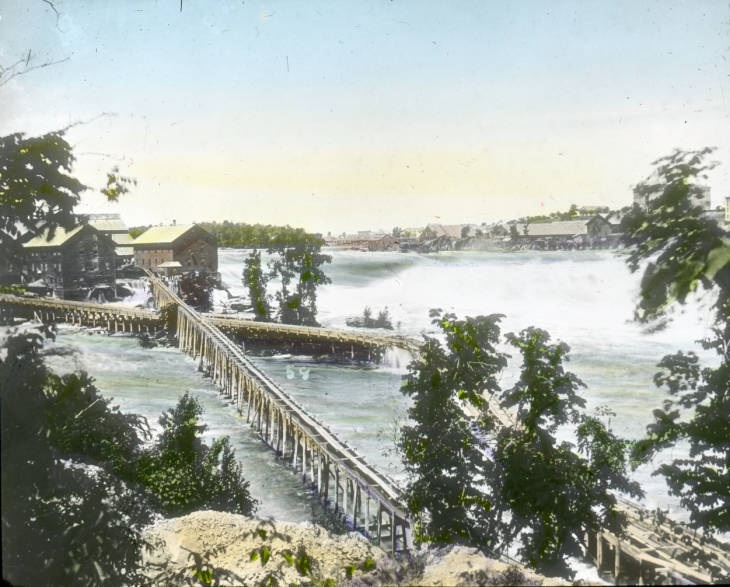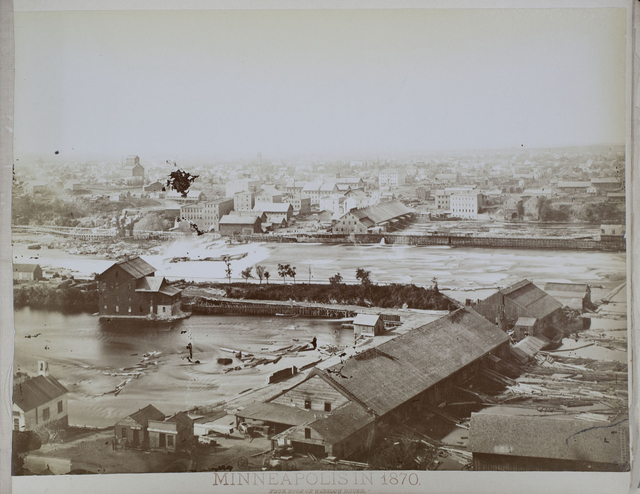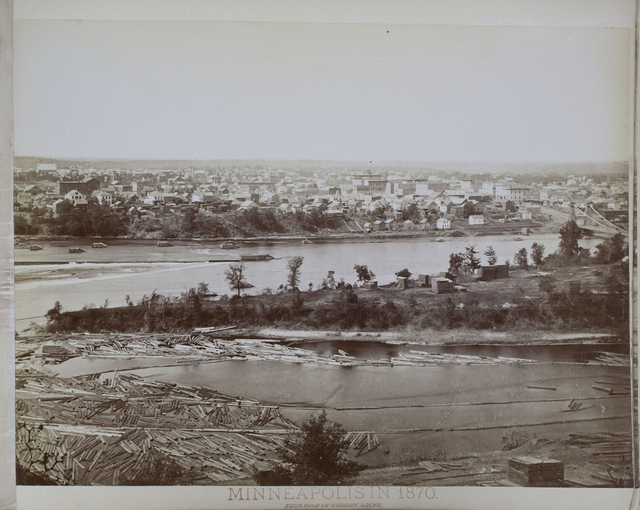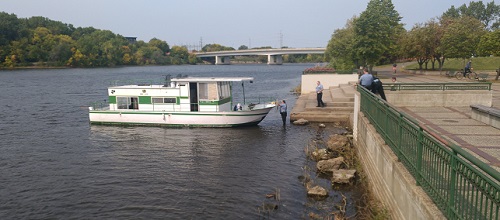The Lumber Capital of the United States
 Monday, September 21, 2020 at 4:16AM |
Monday, September 21, 2020 at 4:16AM |  Michael Rainville Jr |
Michael Rainville Jr | Article by Michael Rainville, Jr.
The Mill City, a beloved nickname of Minneapolis. We all know about the flour milling industry with the Mill City Museum and A-Mill Artist Lofts standing tall along the Mississippi riverfront, and their “Gold Medal Flour” and “Pillsbury Best Flour” signs lighting up the night sky. However, an earlier industry laid the groundwork for the success of the flour milling industry, lumber milling.
The first lumber mill to be located in what is now Minneapolis was built by Fort Snelling soldiers along St. Anthony Falls in the 1820s. Twenty years later when Europeans and East Coasters started to settle the area east of St. Anthony Falls, the rise of the lumber milling industry began. In 1848, Franklin Steele opened the first lumber mill on the east side of the falls, producing 15,000 board-feet of lumber per day. On the west side, Illinois congressman Robert Smith was the first to start a non-government mill a few years after Steele.
The task of harnessing the power of St. Anthony Falls fell into the hands of two companies. On the Minneapolis side of the river, the Minneapolis Mill Company was created to control the waterpower, and on the east side, the St. Anthony Falls Water Power Company did the same for the Village of St. Anthony. A U-shaped dam was created above the falls in order to direct water into large mill ponds on either side of the river. That dam, with upgrades and reinforcements, is still there today.
 The East side mills, with the Winslow House in the background, taken in 1869.
The East side mills, with the Winslow House in the background, taken in 1869.
 Color lantern slide of the West side mills in 1878.
Color lantern slide of the West side mills in 1878.
By 1869, the lumber industry in Minneapolis and St. Anthony was producing 91,000 board-feet per day. 1880 was the last year lumber milling was the predominant industry along the falls, and that year, they produced 180,000 board-feet of lumber per day. By that time, advancements in steam power and the expansion of the local railroads meant that the waterfall was not necessary to produce the power needed for lumber mills. The industry moved upriver, with many mills being located in North Minneapolis and around Boom Island.
 Photo of lumber mills around St. Anthony Falls, taken from the top of the Winslow House in 1870.
Photo of lumber mills around St. Anthony Falls, taken from the top of the Winslow House in 1870.
 Photo of the same set of logs floating by Nicollet Island.
Photo of the same set of logs floating by Nicollet Island.
Now that the lumber industry was located away from the watchful eye of the city center, a unique profession popped up along the river, boom piracy. In the middle of the night when the lumber millers were asleep in their homes, pirates would sneak out onto the log booms on the river and steal logs. This greatly angered the Sven’s and Ole’s who worked hard to chop down white pines up in Northern Minnesota. So, if a boom pirate was caught, they were chained to that same log and sent downriver.
Thankfully, the local boom pirates quickly realized that stealing logs was not worth it and the profession died out, or did it? At 10:30am on Sunday, September 20th, 2020, a boom pirate was spotted on Nicollet Island! He jumped onto one of the houseboats that are docked on the west side of the island and proclaimed to onlookers that he was commandeering the boat under maritime law. Fortunately for him and the boat, a strong wind coming from the south pushed them upriver, and law enforcement corralled the modern-day boom pirate at Boom Island Park.

 Above two photos of the September 20 "modern-day boom pirate" credited to Chris Stellar.
Above two photos of the September 20 "modern-day boom pirate" credited to Chris Stellar.
With the lumber industry able to expand north of the waterfall, Minneapolis became the United State’s leading lumber producer for seven years starting in 1899 with lumberjacks cutting down over two billion board-feet per year! Over the next decade-and-a-half, millions of acres of white pine forests were depleted and lumber milling in Minneapolis came to an end in the early 1920s. However, it took until 2010 for the industry to completely leave the Minneapolis riverfront when the Scherer Brothers Lumber Company moved out of their original Northeast Minneapolis location and sold the land to the Minneapolis Park and Recreation Board, who plan on making it into a park in the coming years.
- - - - - - - - - - - - - - - - - - - - - - - - - -
 About Michael Rainville, Jr.
About Michael Rainville, Jr.
A 6th generation Minneapolitan, Michael Rainville Jr. received his B.A. in History from the University of St. Thomas, and is currently enrolled in their M.A. in Art History and Certificate in Museum Studies programs. Michael is also a historic interpreter and guide at Historic Fort Snelling at Bdote and a lead guide at Mobile Entertainment LLC, giving Segway tours of the Minneapolis riverfront for 7+ years. Contact: mrainvillejr@comcast.net. Click here for an interactive map of Michael's past articles.
